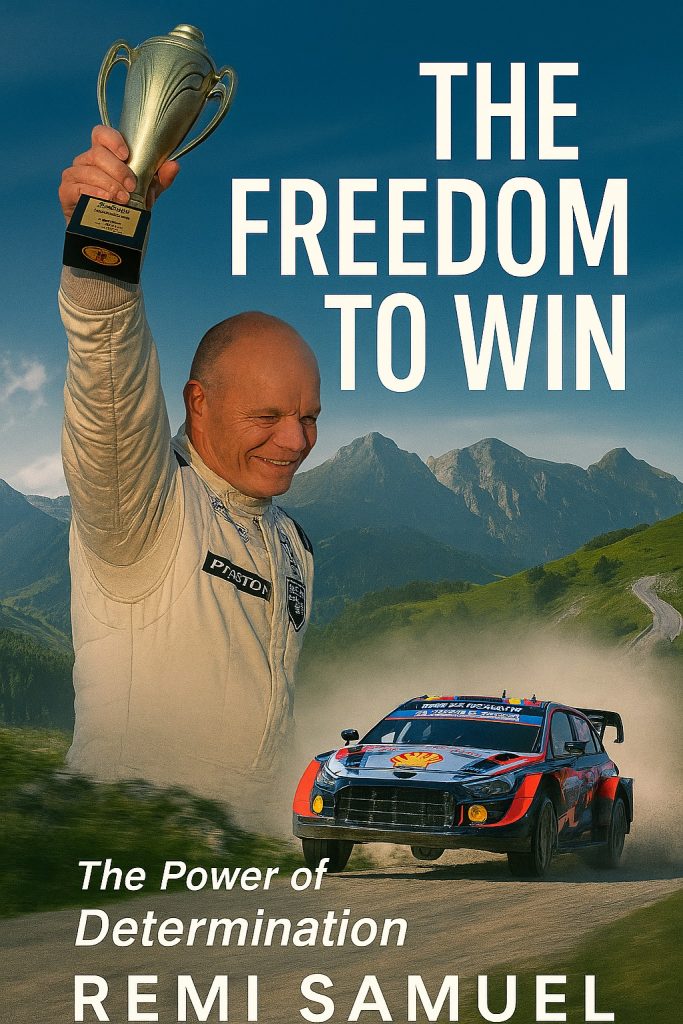
“The Freedom to Win” tells the compelling story of Ram Samuel, a boy who moves to France with a dream of becoming a race car driver, despite being diagnosed with juvenile diabetes at a young age. This is ultimately a story about the human capacity to overcome seemingly impossible odds and find meaning in the journey of life itself. The book chronicles his uncompromising personal struggle against medical limitations, bureaucratic obstacles, and authorities who try to prevent him from pursuing competitive driving. Through vivid descriptions of his journey—including his relationship with his navigator Vincent, his love for Natalie, and the physical and emotional challenges of managing a chronic illness while racing—Ram demonstrates that the path itself, not just the destination, holds the key to fulfillment. The author argues against the “Hollywood ending” mentality, showing that true happiness and peace are found in the present moment rather than in future achievements.
“The Freedom to Win” is a gripping, personal, and uncompromising journey into the heart of a man who chose to live his life at the edge of possibility—not only on the racetrack, but at every station where reality tried to brake him. Ram Samuel, a boy who arrives in France at a young age, grows up between two cultures, between home and longing, between a foreign language and a clear, precise dream: to become a Professional race car driver.
This dream seems impossible not only because of the distance from it, but because of something else—a medical diagnosis that emerged at a young age and drew a thick red line between Ram and everything related to competitive driving: juvenile diabetes. But while others accept the body’s limitations as a decree of fate—Ram chooses otherwise. Not from blind youthful rebellion, but from a rare combination of stubborn emotion, deep inner understanding of himself, and a willingness to make every effort, physical and mental, to prove to the world (and especially to himself) that it’s possible. Not just possible—it’s inevitable.
The book follows Ram’s life throughout his formative years, through daily hardships, compromises, training sessions, nights when his blood sugar drops to dangerous levels—and up to those mornings when he steps onto the racetrack with his heart pounding and his eyes forward. The path to his first race is paved with bureaucracy, doubts from authorities, endless examinations, and rigid positions from people who “simply follow the regulations.” This is a prolonged struggle that demands from him not only persistence, but also the art of diplomacy, elegant determination, and quiet strength—the kind that comes from someone who knows he’s right.
But this book is much more than a story of “against all odds.” It’s the story of a young man who falls in love, loses, falls, rises, erupts in anger, feels shame, gets excited, embraces, fears, dreams, decides. Through his relationships with those around him—his navigator Vincent, his beloved Natalie, his parents, coaches, doctors—a living portrait is woven of a man learning the complexity of human relationships. Real connections, like racing, require coordination, trust, and listening to what lies beneath the noise.
Ram confronts physical difficulties—stomach poisoning, nutritional deficiencies, dangerous blood sugar crashes—but also what is rarely discussed: loneliness. Dealing with a body that refuses to cooperate precisely at the most critical moments. The moments when the crowd cheers—and his heart fights to stay conscious. The moments when inner weakness prevails just when the exterior appears strongest.
The chapters move at a pace that mirrors the world of racing: there are slow moments of anticipation and tension, moments of emotional storm, and then—bursts of adrenaline that shake one’s breath. The emotion is neither artificial nor prettified—it’s precise, raw, yes. From this very simplicity emerges tremendous power: the reader feels as if sitting in the navigator’s seat, right there beside Ram.
One of the book’s highlights is the story of his love for Natalie—a woman who is not only a life partner but an ally in the journey. But even this story is not free from conflicts. Love tested under pressure, including separation and return, fears and loss. The scene of Natalie’s twin sister’s death, as revealed in retrospect, is a chilling moment—where time stops, and pain enters through the thin crack of silence.
Between one race and another, between failure and renewed hope, the reader encounters a man learning not only to win but also to lose—and most importantly: not to give up on himself. This is not a story about “the hero who always succeeds,” but rather about the person who chooses to continue even when he’s not sure where the path leads. It’s a story about coming of age through blows, fuel, steering wheel tremors—and about a personal journey that cultivates identity.
And as Ram himself says in one of the book’s beautiful endings: “That night I didn’t register for victory, but for the journey. And only the journey truly learns to know you.” This sentence summarizes not only the chapter in which it appears, but the entire book. This is not a story about racing—but about the internal race that takes place beneath the surface. About the choice to continue forward even when everything seems lost. About a life that moves at the pace of a brave heart.
The book “The Freedom to Win” offers a unique glimpse into an unfamiliar world—the world of racing—but primarily, it provides a rare and intimate look into a courageous human soul. His name is Ram Samuel. But this could also be the path of any one of us.